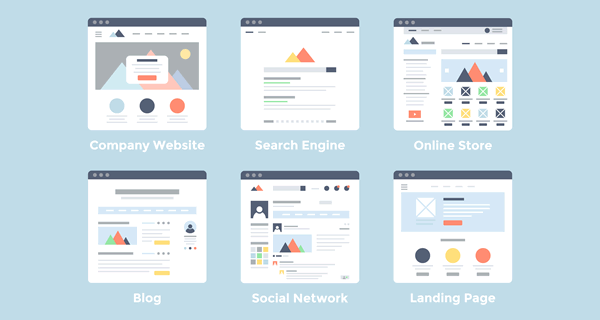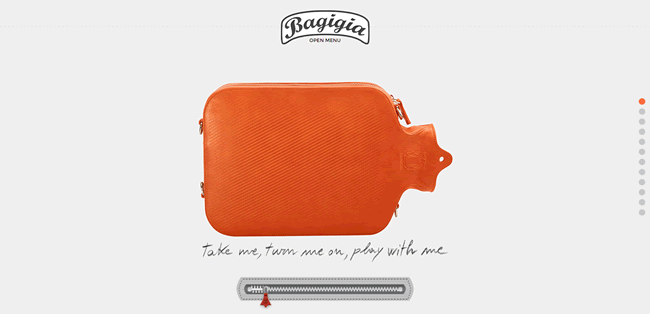As a freelance web professional, designing websites is your livelihood and in some cases, your life. Your ability to create a website that does everything but make and pour coffee is commendable, but the sad truth is that other than yourself and other web designers, nobody cares about the design at all.
What they care about is what it can do for them. Truly great web design supports the purpose of the site, focuses on what the client wants and needs, and most of all makes it easy for the user to meet their goal in finding the information they are searching for. This can be a difficult concept for a web designer to embrace, as creative individuals often have a fierce love for their own creations.
Site Design and Site Purpose
A website’s purpose defines the structure of the site. Identifying and clearly stating the purpose of a website provides direction for the design work and helps establish the stages required in site construction. It also helps in estimating the scope of the project, and your fees.
Informational or content sites may include hundreds or thousands of articles, requiring a robust search and navigation system as well as interactive tutorials or videos. Transactional websites and eCommerce sites may act as digital catalogues utilizing shopping cart features and more sophisticated digital image or slideshow capabilities. Other websites simply exist as a sales tool to drive readers into a bricks-and-mortar business, and require a very basic website with a homepage, about us page, portfolio, contact us form and a blog. Site design sets the stage for the star of the website show, which is the web content that fulfils the purpose of the site.

Site Design To Please Your Client
Unpopular though this idea may be, good web design is about pleasing people. First, please your client. Secondly, please the readers who are going to visit your client’s site.
While it is arguably more important to please the user than the client, the client is paying you and keeping food on your table, so it’s best to keep them happy. In order to create a site that makes them smile and meets their expectations, it is imperative that you have a very clear understanding of what they want and need on their website. This is much trickier than it sounds.
Ideally, a client’s vision for a website goes hand-in-hand with the purpose, but this isn’t always the case. Sometimes, what a client wants doesn’t line up with what is needed to achieve the goal of the site.
Many entrepreneurs and small business owners hear that their peers and competition have websites, “so we better get one too.” They may have a general idea of what they want in terms of including their logo and basic information about their businesses, but be prepared to ask a lot of questions of your web design clients to ensure your project meets their requests.
An experienced web designer realizes that often client needs may be different from their wants, and through questioning the client they can skilfully extract the necessary elements of the site.
Ask your clients about their biggest competitors and then visit their sites. Find out what it is that that the client likes most and least about their competitors’ websites. This may help fine-tune their vision for their own site. If not, a few carefully worded questions can point out the discrepancy between a website dream and the more practical reality of a site that will achieve the desired purpose.
With practice, an experienced web designer can develop phrases and questions to delicately suggest to a client that what they want may not appeal to their readership.
Site Design to Please the User
The longer a user remains on a website, the more likely they are to perform the action the site owner (your client) wants them to, fulfilling the purpose of the site. Sadly for designers, complex, over-the-top website design that makes use of the latest innovations is not enough to keep users on site, unless of course, the users are website designers themselves and the purpose of the site is to illustrate the latest and greatest design techniques.
Keep your design clean and simple, but don’t worry, you can still put your creativity to work by finding a way to make your project stand apart from competitor sites.
Remember that good web design creates a user experience that enables readers to immediately determine the purpose of a site, and that whitespace is not to be feared, but can be used effectively to draw the reader’s eye to important content on the page.

Effective Example of Whitespace: Bagigia.
Once they confirm that the site meets their needs and contains the answers to their questions, readers need to be able to quickly find the specific piece of information required. Nothing frustrates online users more than not knowing how to find the information they need. While you may be tempted to get creative with navigation and search capabilities, please don’t.
Effective site design allows users to find the required information quickly, and solid web content is what keeps them onsite once they’ve found that information.
The best user interfaces are designed with the target user in mind, and website designers should always be cognisant of just who will be visiting the site. Many designers and clients forget that users may require different words and phrases than those used by the web designer and the client, especially if they don’t know the acronyms and nicknames for industry norms, products and services.
Websites designed without consideration for the user may be marvels of ingenuity yet completely useless to the target user and the client.
Once the typical user is identified, it is easier to set the guidelines for what type of content is best to populate the site. Text may appear in one or more forms including blog posts, product descriptions and articles. Images, infographics, videos, slideshow galleries and interactive components may also be included. Great site design seeks to accommodate and highlight the identified web content that will most appeal to the target user.
Web Design is the Framework of a Web Content Vehicle
It can be tough to confront the idea that your design isn’t the centre of the universe, but the fact is, it isn’t. Your most recent web design may be awesome, a thing of beauty to you and your peers, and it may even garner a grudging compliment or two from your competition. The fact of the matter is that your digital creation that went through revision after revision and kept you up late at night and drinking far too much coffee, is simply the frame of a vehicle for a client who wants to entice readers to take an action that will likely result in a sale.
Getting your head wrapped around this idea of web design as simply a vehicle for web content isn’t meant to belittle your talents, but rather to provide a filter through which future web design decisions are made.
What You Like Does Not Matter and This Should Make You Happy
Another hard truth about web design is that what you like doesn’t matter at all. What the client wants matters. How well the site design supports the purpose and content matters. What matters most is what the online user needs, because if they find it on the site that you designed they will buy something, making the client happy.
You may find the site bland and boring, but if it meets the requirements, fulfils the purpose and meets or exceeds the client’s goals, you will have a happy client. A really happy client will refer their friends and family members to you so you never have to do any marketing for your website design business ever again. And that should make you happy.
And there you have it. Web design is secondary to web content, and exists to support the purpose and content of a site which in turn exists to encourage users to take an action. While a great website design may not win the Best Actor award at the website Oscars, it can always take home Best Supporting Actor!
Related Topics
Top